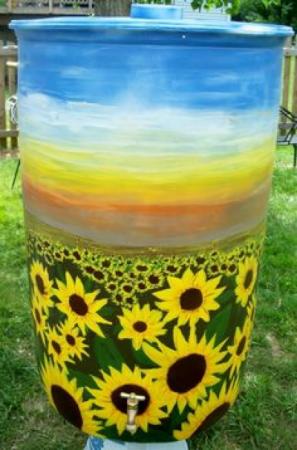Painting Tips
Here’s a guide to get you started – please shop local for these supplies.
-
Label Removal – For a paper label, spray it with water and let it soften, then take a scrubby sponge and scrub off all paper and adhesive. A plastic paint scraper is also helpful. Any adhesive you can feel but not see can be sanded off later. For plastic labels, peel off with a plastic paint scraper. A goop type product or lemon essential oil may help for a particularly difficult label.
-
Wash the entire barrel with warm water and dish detergent. Dry with a soft cloth.
-
Sand the barrel with 220-grit sandpaper. A light sanding is all that is needed to remove the barrel’s waxy coat and give the primer something to bite to. The paint then sticks to the primer.
-
Wipe barrel down with either vinegar or an ammonia/water solution.
-
Primer – Do not brush or spray on too thin. Work into all crevices, including stamped letters. Cover the entire surface. Let dry well. You must be able to put primer on immediately after sanding, as the surface will re-wax if left. Make sure the primer is able to adhere to plastic. Aerosol primer is another option; figure roughly two cans per barrel.
-
When the primer is completely dry, you may sketch your design and begin painting. Use a dull pencil, as a sharp pencil will scratch off the primer. The pencil marks do erase well. It is recommended to use two to three light coats of paint to reduce the chances of the paint sagging and to drip!
-
When you are finished painting the design on your barrel, it is highly recommended to give 48 hours drying time before you move it; longer would be better. The paint needs a period of time to cure to reduce the possibility of damage to the paint job. The lower the temperature of your work area, the longer the drying time needed.
-
Finally, we recommend using a clear coat to protect the painting design and give your barrel a nice sheen.
A Few Helpful Tips:
-
Follow the basic rules you would when painting a wall. Tape, cut in, and fill in. Do the background first and then the detail.
-
Remember, thick coats of paint tend to peel! Use multiple thin coats.
-
When using masking tape, remove the tape before the paint dries to prevent the tape from pulling off dry paint. If this happens, you will need to re-prime
Source: Click here

